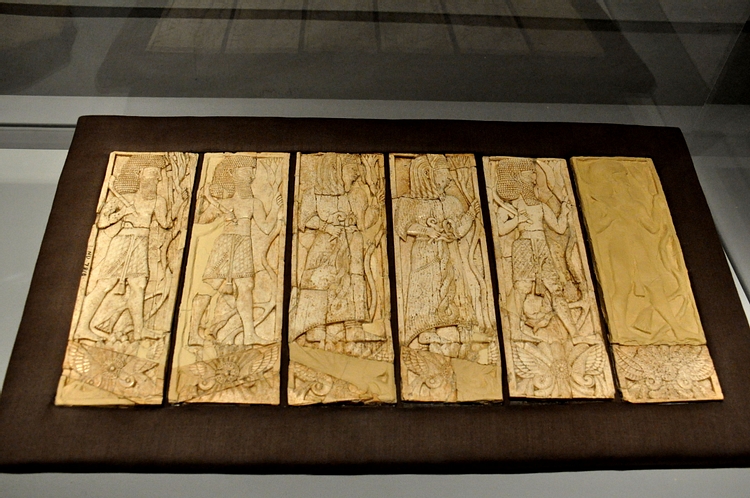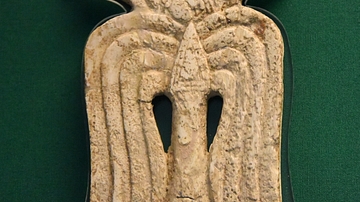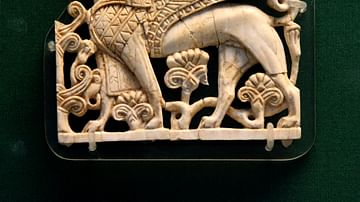Illustration
This ivory plaque depicts six Assyrian worshippers in procession in six vertical rectangles. Note the details of their dresses. The men are bare-chested and wear kilts while the women wear a full dress. Both genders wear an impressive belt. Four men and two women stand on what appears to be the symbol of God Assur. The plaque was part of furniture inlay.
Note the "ND 7918"; this is the excavation number. Excavated by a team led by Max Mallowan (1904 - 1978 CE) and David Oates (1927 - 2004 CE), the British School of Archaeology in Iraq in the mid-20th century CE. From Nimrud, Iraq. Neo-Assyrian period, 911-612 BCE. On display at the Sulaymaniyah Museum, Iraq.
About the Author
Cite This Work
APA Style
Amin, O. S. M. (2014, January 30). Ivory Plaque from Nimrud (Ancient Kalhu). World History Encyclopedia. Retrieved from https://www.worldhistory.org/image/2271/ivory-plaque-from-nimrud-ancient-kalhu/
Chicago Style
Amin, Osama Shukir Muhammed. "Ivory Plaque from Nimrud (Ancient Kalhu)." World History Encyclopedia. Last modified January 30, 2014. https://www.worldhistory.org/image/2271/ivory-plaque-from-nimrud-ancient-kalhu/.
MLA Style
Amin, Osama Shukir Muhammed. "Ivory Plaque from Nimrud (Ancient Kalhu)." World History Encyclopedia. World History Encyclopedia, 30 Jan 2014. Web. 23 Oct 2024.








